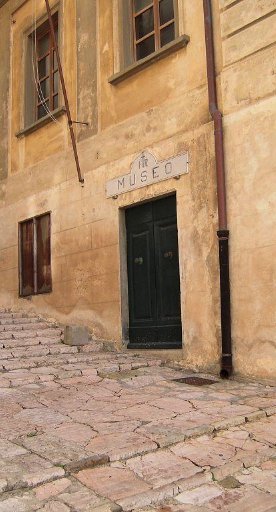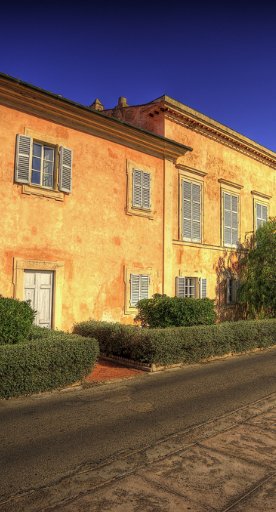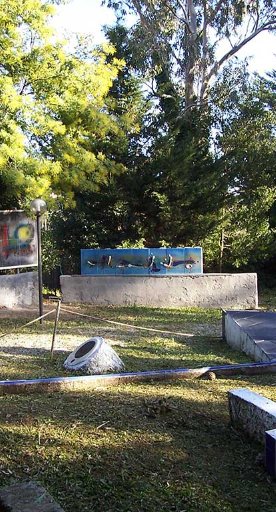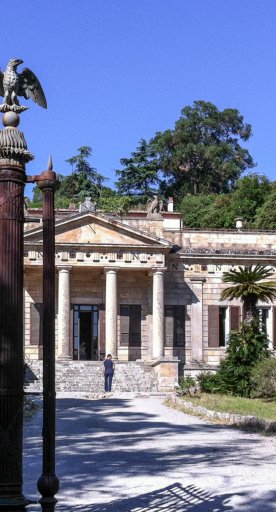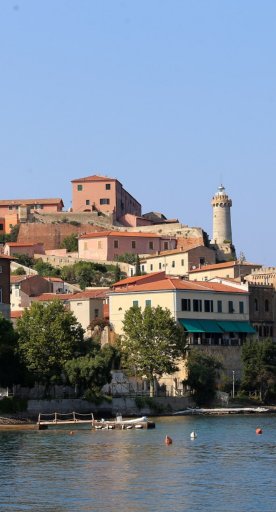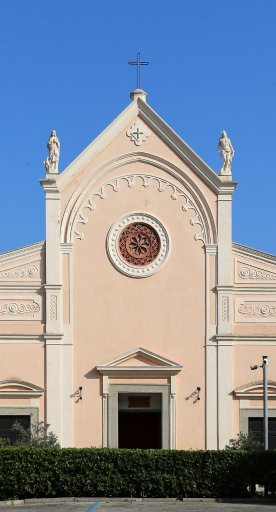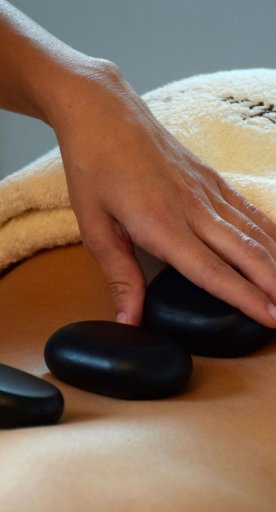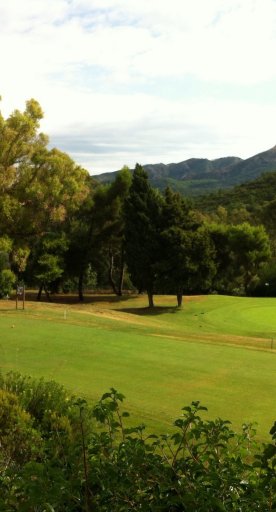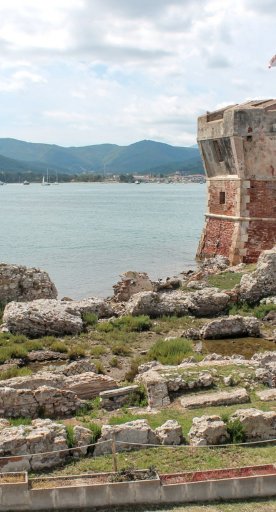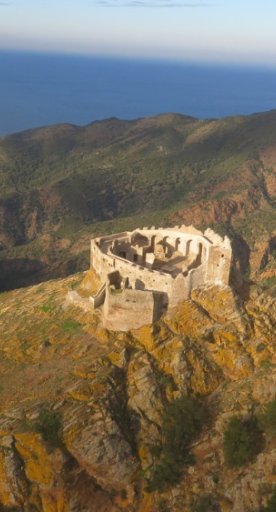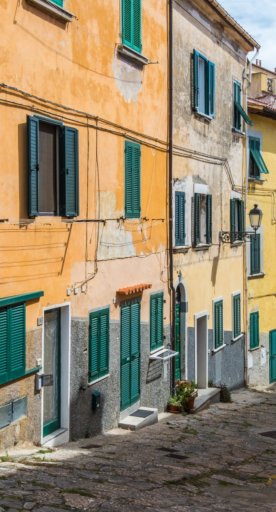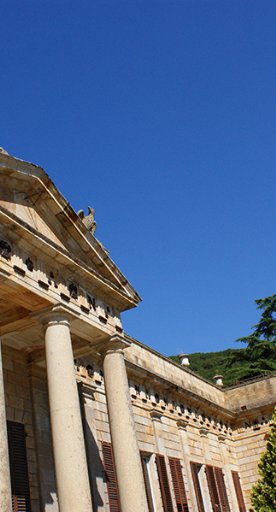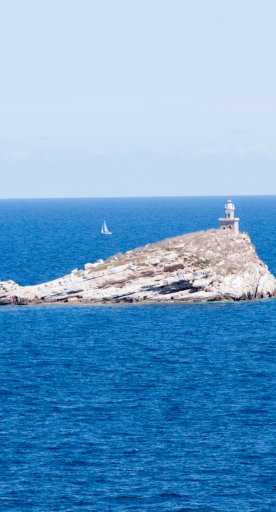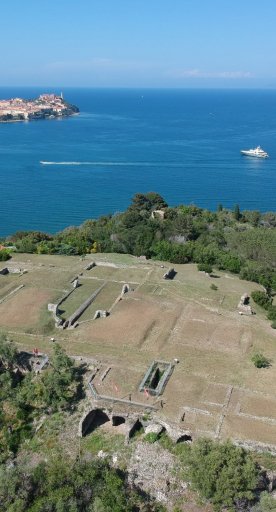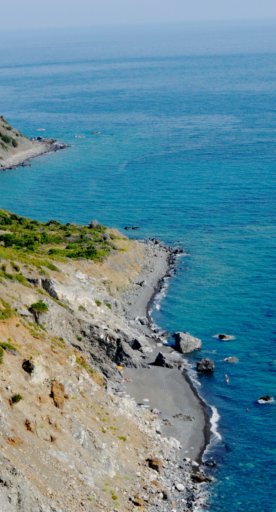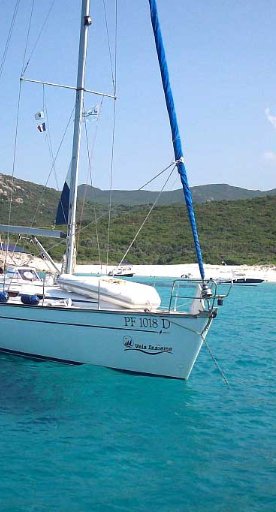Portoferraio
An itinerary full of Medici fortifications and beautiful beaches
Portoferraio is the capital and the main port of Elba Island and is located on the north-eastern coast, at the foot of a promontory that borders the bay.
Portoferraio, one of the oldest of the island’s towns, predates the old Roman city of Fabricia: traces of first settlements date to the Ligurians, Etruscans and ancient Greeks. Today’s town was built under Cosimo I de' Medici, who renamed the center Cosmopoli and in 1548 commissioned the fortification of the city in order to defend it from attacks by enemies and pirates. The imposing front can already be seen when arriving by sea and even made the dreaded Turkish pirate Dragut turn around.
Portoferraio is also known for hosting Napoleon Bonaparte, who lived here in exile from May 4, 1814, to February 26, 1815.
What to see in Portoferraio
The imposing Medici forts are surely one of Portoferraio's most distinguishing features. The stronghold of three forts, Falcone, Stella and Linguella, are connected to each other by solid and powerful walls and walkways.
The project began to take shape in 1548, and was led by the Renaissance architects Bellucci and Camerini, who were later joined by Bernardo Buontalenti. The complex military architecture is perfectly adapted to the conformation of the land of the area. The entire structure rises from the Porta di Terra, on the sea, up to the majestic Fort Falcone, from where you can enjoy a charming view of the sea.
In the heart of Portoferraio, you'll find one of Napoleon's residences, Palazzina dei Mulini. His second residence, Villa San Martino, is located in the countryside.
Among the places of cultural interest, don't miss the Pinacoteca Foresiana which was donated in 1914 by Dr. Mario Foresi, an intellectual with many literary, artistic and musical interests. The museum is housed in the historic De Laugier barracks.
The Archaeological Museum, on the other hand, is located in the centuries-old building of the Linguella salt warehouses. Here you can find archaeological treasures from Elba and the Tuscan Islands, with a chronological arc that extends from the end of the eighth century BC. to the 5th century AD.
Beside the museum are the ruins of the Roman Villa della Linguella. At the opposite end of the Gulf of Portoferraio, there are the remains of another villa, the Villa Romana delle Grotte.
The imposing Medici forts are surely one of Portoferraio's most distinguishing features. The stronghold of three forts, Falcone, Stella and Linguella, are connected to each other by solid and powerful walls and walkways.
The project began to take shape in 1548, and was led by the Renaissance architects Bellucci and Camerini, who were later joined by Bernardo Buontalenti. The complex military architecture is perfectly adapted to the conformation of the land of the area. The entire structure rises from the Porta di Terra, on the sea, up to the majestic Fort Falcone, from where you can enjoy a charming view of the sea.
In the heart of Portoferraio, you'll find one of Napoleon's residences, Palazzina dei Mulini. His second residence, Villa San Martino, is located in the countryside.
Among the places of cultural interest, don't miss the Pinacoteca Foresiana which was donated in 1914 by Dr. Mario Foresi, an intellectual with many literary, artistic and musical interests. The museum is housed in the historic De Laugier barracks.
The Archaeological Museum, on the other hand, is located in the centuries-old building of the Linguella salt warehouses. Here you can find archaeological treasures from Elba and the Tuscan Islands, with a chronological arc that extends from the end of the eighth century BC. to the 5th century AD.
Beside the museum are the ruins of the Roman Villa della Linguella. At the opposite end of the Gulf of Portoferraio, there are the remains of another villa, the Villa Romana delle Grotte.
Nearby
Villa San Martino is found in the town of the same name, and was purchased by Napoleon in June 1814 in order to make it his summer residence. It was later purchased by Prince Anatolio Demidoff, who had the grand neoclassical gallery built which today houses a collection of nineteenth-century Napoleonic prints.
The historic Volterraio Castle (12th century) is located at the top of a hill on the border between the municipalities of Portoferraio and Rio nell'Elba. It was built on a peak that had been used for defensive purposes since as early as the end of the fourth century BC. Volterraio later became part of the island's defensive system, designed by the Pisan Republic. Thanks to large reinforcement works that were carried out around 1440, the fortress was able to withstand the Turkish attack in 1544. Centuries later, in 1798, the French troops stationed in Portoferraio further strengthened the garrison, but a popular insurrection led to the semi-destruction of the complex, which has since been entirely abandoned.
There are many other attractions in the Portoferraio area, such as the beautiful and austere Pisan Romanesque Church of Santo Stefano alle Trane, the ancient Etruscan Fortress of Castiglione, the Italo Bolano International Art Center and the Giardino Botanico dell'Ottone. In the municipality of Portoferraio, you can also find the Terme di San Giovanni, the only ones to be found on Elba Island.
Portoferraio is the perfect destination for sea-loving tourists, with a varied range of beaches, from the sandy shores of Scaglieri and Forno, to the mixed sand and gravel ones of Bagnaia, Ottone, Le Viste, Viticcio and Le Ghiaie, up to the pebbly shores of Magazzini, Capo Bianco and Seccione. From Portoferraio, you can easily reach all the beaches on Elba Island that are magnificent with their sandy floors and coves that overlook the deep blue.
Villa San Martino is found in the town of the same name, and was purchased by Napoleon in June 1814 in order to make it his summer residence. It was later purchased by Prince Anatolio Demidoff, who had the grand neoclassical gallery built which today houses a collection of nineteenth-century Napoleonic prints.
The historic Volterraio Castle (12th century) is located at the top of a hill on the border between the municipalities of Portoferraio and Rio nell'Elba. It was built on a peak that had been used for defensive purposes since as early as the end of the fourth century BC. Volterraio later became part of the island's defensive system, designed by the Pisan Republic. Thanks to large reinforcement works that were carried out around 1440, the fortress was able to withstand the Turkish attack in 1544. Centuries later, in 1798, the French troops stationed in Portoferraio further strengthened the garrison, but a popular insurrection led to the semi-destruction of the complex, which has since been entirely abandoned.
There are many other attractions in the Portoferraio area, such as the beautiful and austere Pisan Romanesque Church of Santo Stefano alle Trane, the ancient Etruscan Fortress of Castiglione, the Italo Bolano International Art Center and the Giardino Botanico dell'Ottone. In the municipality of Portoferraio, you can also find the Terme di San Giovanni, the only ones to be found on Elba Island.
Portoferraio is the perfect destination for sea-loving tourists, with a varied range of beaches, from the sandy shores of Scaglieri and Forno, to the mixed sand and gravel ones of Bagnaia, Ottone, Le Viste, Viticcio and Le Ghiaie, up to the pebbly shores of Magazzini, Capo Bianco and Seccione. From Portoferraio, you can easily reach all the beaches on Elba Island that are magnificent with their sandy floors and coves that overlook the deep blue.
Events
The Festival Elba Isola Musicale d’Europa is an international music festival established in 1997. The festival's main venue is the historic Teatro dei Vigilanti, built at the behest of Napoleon and reopened following a long restoration on the inaugural evening of the festival's first edition. The musical performances are complemented by excursions, talks and guided tours that take in Marciana, Marciana Marina and Rio as well as occasionally others, in addition to the municipality of Portoferraio.
The Festival Elba Isola Musicale d’Europa is an international music festival established in 1997. The festival's main venue is the historic Teatro dei Vigilanti, built at the behest of Napoleon and reopened following a long restoration on the inaugural evening of the festival's first edition. The musical performances are complemented by excursions, talks and guided tours that take in Marciana, Marciana Marina and Rio as well as occasionally others, in addition to the municipality of Portoferraio.
Typical dishes and products
In Portoferraio, you can taste all the dishes and typical products of Elba Island, starting with schiaccia briaca, a legacy of the Barbary pirates whose recipe (originally teetotal) was revised and enriched with local ingredients, such as Aleatico DOCG from Elba Island.
In Portoferraio, you can taste all the dishes and typical products of Elba Island, starting with schiaccia briaca, a legacy of the Barbary pirates whose recipe (originally teetotal) was revised and enriched with local ingredients, such as Aleatico DOCG from Elba Island.
